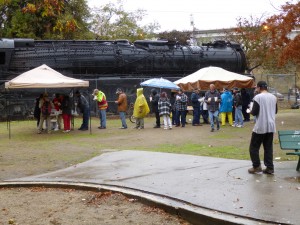
Take a country—any country—and destroy its manufacturing base by sending jobs overseas. Make sure no alternative job base develops.
In the same country, see that wages, including the minimum wage, remain static for almost forty years; further reduce jobs through automation, computerized information systems, outsourcing, and downsizing.
Simultaneous to job and wage reduction, in that same nation raise housing costs. Raise the costs of education exponentially. Make sure energy costs, especially for home and transportation, rise steadily.
Would you expect poverty to increase? Of course you would.
It should be no surprise, then, that a study by non-partisan United Way has shown poverty figures in California are running close to one-third of the total state population. The recent outbreak of visible poverty in the form of homelessness has captured public attention nationwide, but homelessness is just the ugly bare parts of poverty showing through our tattered social fabric.
Before the United Way research was released, Stanislaus County officials revealed figures showing at least 20,000 Stanislaus County residents in imminent danger of homelessness. Additionally, the United Way data show that thirty-six percent of Stanislaus County citizens struggle daily to make ends meet.
Last Tuesday in Modesto, over a hundred people attended United Way’s “Struggling to Get By” public presentation of its research. The data on the number of people without enough money to provide daily essentials were stunning.
Unfortunately, we still have too many people all too ready to deny evidence of the economic causes of homelessness and poverty. So it is that many at Tuesday’s meeting were still citing self-help and family values as cures for statistics that show one-third of California’s population is in a daily struggle to pay for food and shelter.
“We need to teach people to think like winners,” said a congressional assistant. “We need to mentor these people,” said a local politician. “They need to learn how to use their money,” said another audience member.
All these notions go back to the late 80s and early 90s movements to, “end welfare as we know it.” The idea was that that here in the land of endless opportunity, church and family values were the real keys to charitable works and economic success.
While there is no question our local churches and charities have tried to address poverty and homeless through endless gifts of charity and instruction, most anyone with long-term experience will admit the problem is simply too big. For one thing, the number of mentally ill people who are homeless or near-to-homeless is staggering; they need professional treatment, not instruction in self-help. For another, the number of working poor who are in imminent danger of homelessness represents a tsunami of humanity with the potential to render helpless twice our number of churches and charities.
It doesn’t do much good to tell people working full-time at minimum wage that they need to learn how to manage their money. Our own regional housing authority has said people need a full-time job at fifteen dollars an hour to afford average housing costs in Stanislaus County. No matter how hard one works or wants to work, there simply aren’t enough available jobs at that rate. The resulting homelessness is not a matter of family values; it’s a matter of low wages and insufficient affordable housing.
The city of Los Angeles just budgeted $100 million dollars in an attempt to assist its growing homeless population. Locally, we too will have to do all we can to make shelter available for people with nowhere to go. The alternatives are more homeless people and ever greater associated expenses.

Thank you for addressing this topi! It’s a very overwhelming problem to get a group to argee the best approach to make a difference. The average citizen is so distracted by the enormous amounts of busy body, mass consumption, T.V. ..etc, with the “it doesnt effect me” kind of attitude. We have got to not only treach society one persons problem is everyones problem. I agree that what the homeless need is professional treatment. It starts with support, hope and diligent encouragement. psycological reprograming to teach them how to transition successfully back into main stream society takes time and daily support. They have to be given real resources and opprotunities to success. A book of affirmations and a place to sleep is not enough! Its a large task but it is worth the effort. Anyone of us could be homeless. A natural disaster or state of emergency could hit at any time without notice. We have to have more than compassion for our homeless. We have to help them UNTIL they are rehabilitated and not WHEN we feel like it. NOW!
Could not agree more Kelly. However, for many the transition into mainstream society must be qualified by a constant need for assistance. This group includes the mentally ill and physically disabled, who should never have been abandoned by society in the first place.